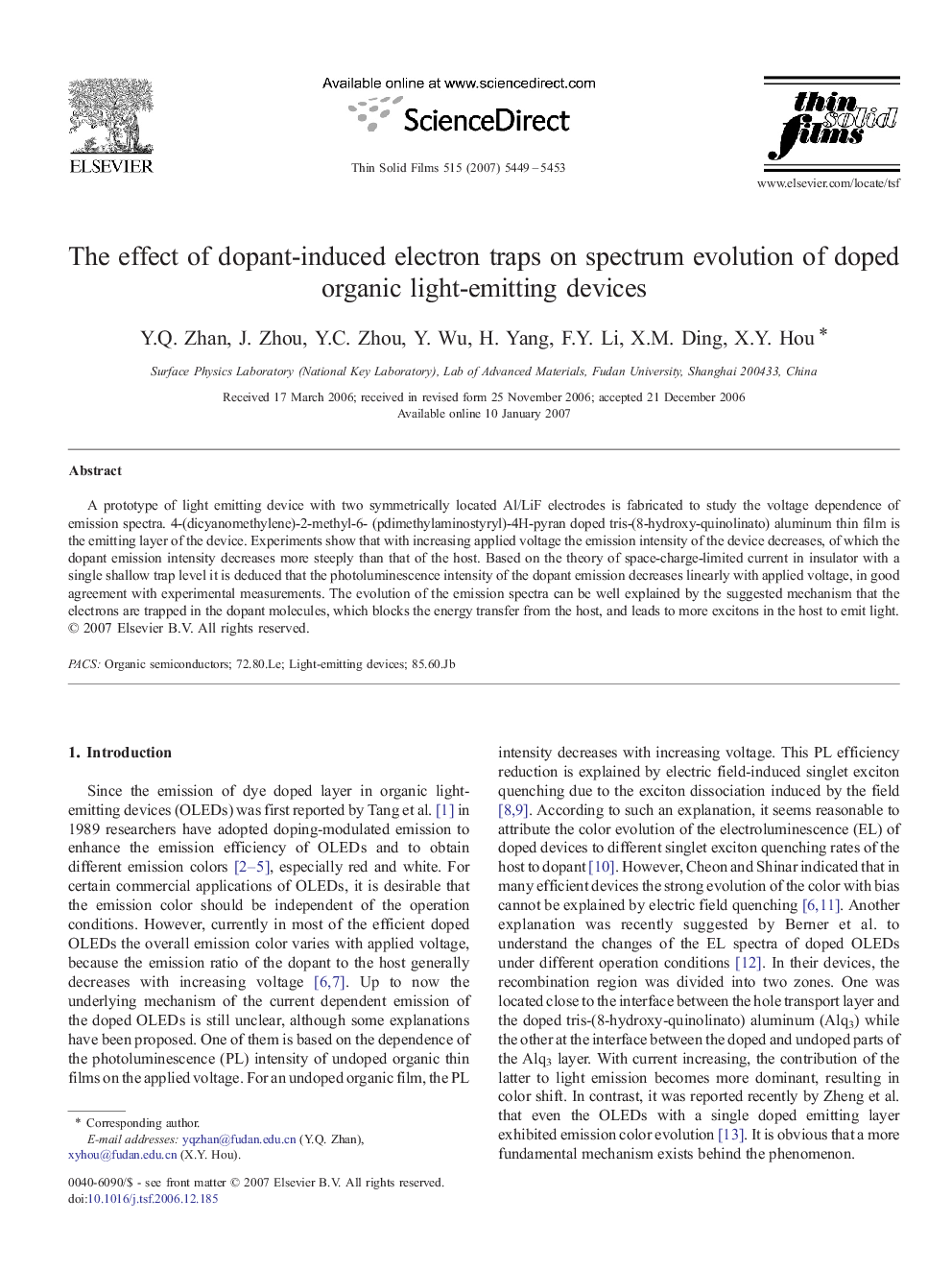| Article ID | Journal | Published Year | Pages | File Type |
|---|---|---|---|---|
| 1676124 | Thin Solid Films | 2007 | 5 Pages |
A prototype of light emitting device with two symmetrically located Al/LiF electrodes is fabricated to study the voltage dependence of emission spectra. 4-(dicyanomethylene)-2-methyl-6- (pdimethylaminostyryl)-4H-pyran doped tris-(8-hydroxy-quinolinato) aluminum thin film is the emitting layer of the device. Experiments show that with increasing applied voltage the emission intensity of the device decreases, of which the dopant emission intensity decreases more steeply than that of the host. Based on the theory of space-charge-limited current in insulator with a single shallow trap level it is deduced that the photoluminescence intensity of the dopant emission decreases linearly with applied voltage, in good agreement with experimental measurements. The evolution of the emission spectra can be well explained by the suggested mechanism that the electrons are trapped in the dopant molecules, which blocks the energy transfer from the host, and leads to more excitons in the host to emit light.
